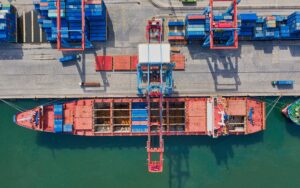On the 14th of June 2017, 72 people died in the UK’s worst residential fire since the Second World War. The 23-storey Grenfell Tower in North Kensington caught fire. The cause of the blaze was the result of a faulty fridge freezer on the fourth floor. The fire spread rapidly up all four sides of the building, and within two hours the most upper floors of the building were alight.
Between 2012 and 2016, Grenfell Tower had gone through a major refurbishment. An enquiry into the fire found that cladding installed during the refurbishment had played a significant part in the rapid spread of the fire. On Wednesday 10th March 2021, the enquiry was shown documents suggesting that the suppliers of the cladding had been advised that the materials used in its construction were of high fire risk. Two types of industrial insulation foam were used in the cavity of the cladding, one of which contained highly combustible polythene polymer. Test results had been falsified by the manufacturer of the cladding to make the material appear more fire retardant than it was, and contractors involved made insufficient safety checks on the materials being used.
During the construction of many residential tower blocks, building regulations only required that alarm systems should be localised. A result of this was, should a fire break out, only the residents of that unit would have to evacuate as, in theory, the fire should be contained. Fire alarm systems were not installed to alert all residents of the building to evacuate. Until alarm systems can be modified, authorities require a 24-hour patrol performed by fire wardens.
In 2019, RICS (Royal Institute of Chartered Surveyors) introduced a mandatory requirement that all buildings of more than 18 storeys have an External Wall Fire Review Certificate (EWS1). With many buildings having unsafe or uninspected cladding, governing bodies will not issue an EWS1 certificate. Without a valid EWS1 certificate, homeowners are not only facing a significant rise in ownership costs, but mortgage lenders are also reluctant to remortgage people’s homes or offer mortgages to buyers. Many homeowners are now of the opinion that their homes are worthless as they are unable to remortgage or sell their properties.
Up to 11 million people may live in homes with unsafe cladding. Many homeowners are now facing increased home insurance premiums and potentially bills running into the tens of thousands of pounds so that freeholders can make buildings safe after failed safety inspections. Monthly service charges have increased by hundreds of pounds to cover recommended short term safety measures. The UK government has set aside a £1bn building safety fund to help with the removal of unsafe cladding. Government advisors have also suggested that building owners take out short term loans and recoup the costs from leaseholders 1. An enquiry examining the circumstances and causes of the disaster, including how Grenfell Tower came to be in a condition that allowed the fire to spread, is due to resume on 19th April 2021.


